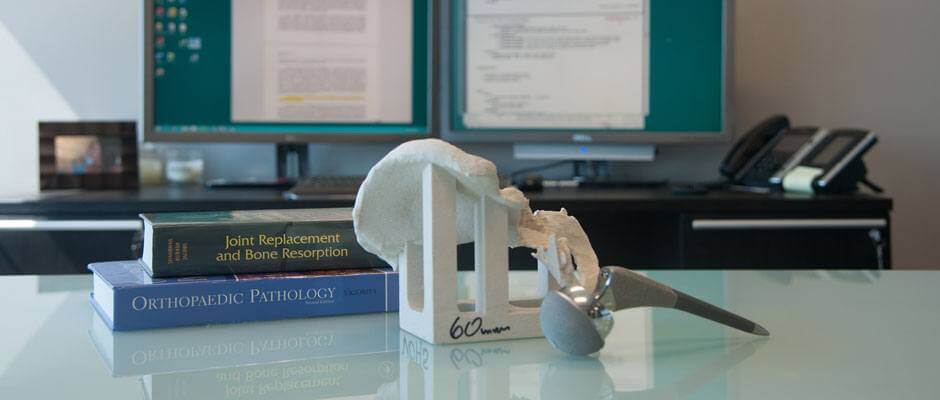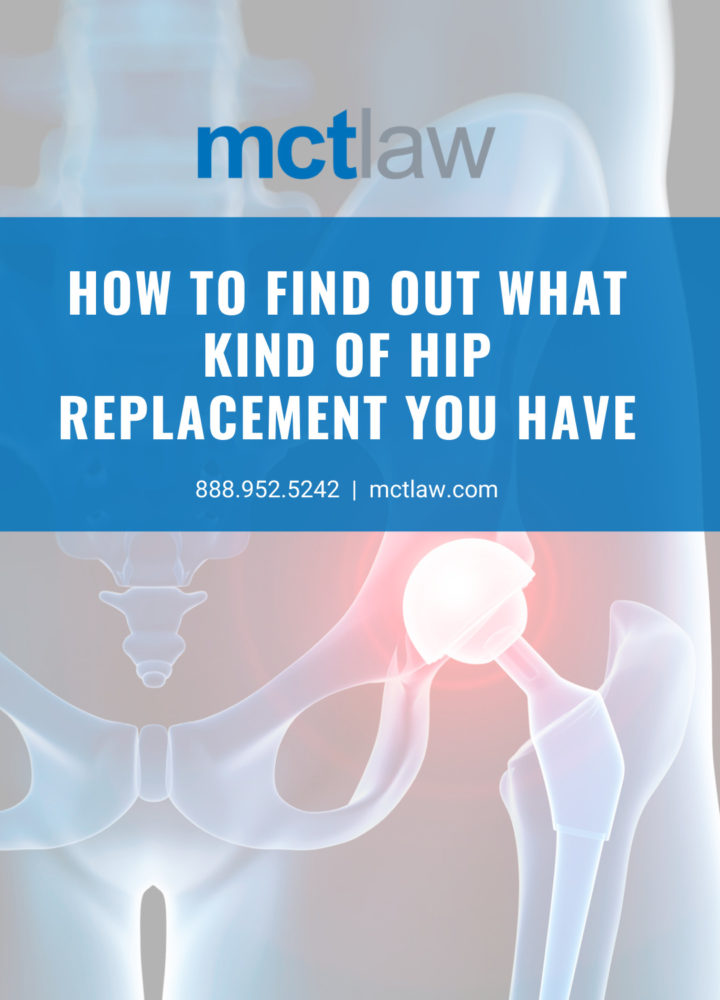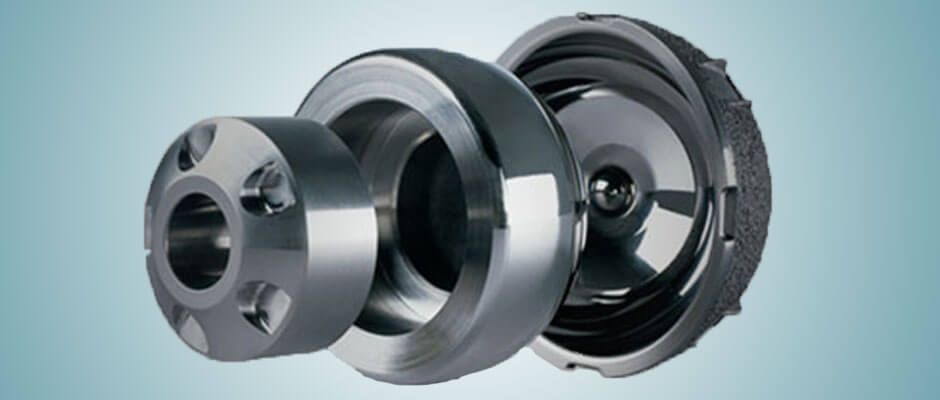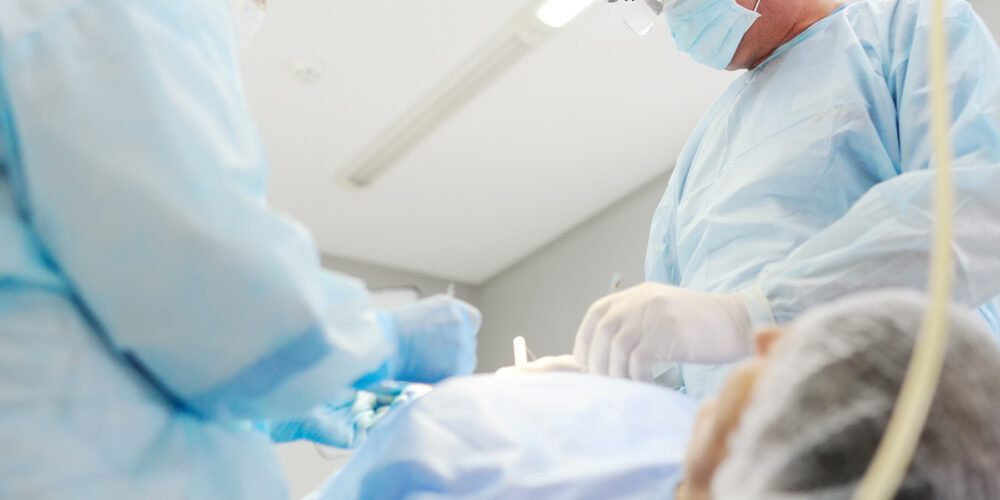
Biomet Metal-On-Metal Hip Replacement Lawsuits and Settlements
Biomet Metal-on-Metal Hip Replacement Lawsuits
The Biomet M2a-38 and the M2a-Magnum are metal-on-metal hip implants with a history of serious complications. Patients across the United States have filed lawsuits demanding Biomet take responsibility for making and selling defective hips.
Patients are suffering from metal poisoning, metallosis, ALVAL, heart damage, pseudotumors, dead muscle and bones, and a very long list of other medical problems. Many are forced to get a brutal revision surgery to remove the Biomet hip and replace it with another type of implant.
mctlaw is one of the few law firms in the country still reviewing medical records and filing lawsuits for people hurt by Magnum hips.
What is Wrong with the Biomet Hips?
The Biomet M2a 38 and the M2a Magnum hips were poorly designed from the start. The idea behind metal on metal hips is that the body’s own fluids would provide enough lubrication between the cup and the ball of the hip replacement. Instead, the cobalt and chromium metal surfaces of the hip and the cup rub and grind together, releasing microscopic metal debris into the hip cavity. That metal can destroy the muscle, bone, and other tissue surrounding the hip. The metal dust is also small enough to enter the bloodstream and cause metal poisoning throughout the body.
Biomet and its sales representatives convinced many surgeons across the US about the promise of their M2a metal on metal hip implants. Unfortunately, and unknown to most people (including surgeons), more than 95% of medical devices, like the M2a 38 and M2a Magnum hips, make it into a patient’s body without a single test for safety or effectiveness. Basically, the majority of the patient population became live test subjects without even knowing it. When that happens, patients – like our metal on metal hip clients – unknowingly take on risks of horrifying medical outcomes.
Biomet has not taken responsibility for making and selling a hip that is devastating people’s health and their lives. The problem of sales before safety is so bad that Biomet warned surgeons about these hips in Australia and Europe. However, Biomet did not warn American surgeons at the same time. Instead, they kept on selling the hips in the United States.
I need to express my appreciation to everyone who has accepted and pursued my case with courage and diligence. As i was researching the effects of metallosis, mctlaw popped up. On a whim, after being turned down by more firms than I can count, I filled out an online form and received a call from your firm. Then all of a sudden my case was accepted and became a priority. I was blown away. I wish all of you continued success and happy healthy lives!!
– Ira (last name withheld for privacy), Biomet Hip Replacement Client
5 Steps to Take Now if you Have a Biomet M2a Metal on Metal Hip
1. See Your Doctor for a Follow-Up Exam – Even if you Don’t Have Symptoms
Ask your surgeon if you should get a MARS MRI or CAT scan of your hip. These tests look for pseudotumors, or Adverse Reactions to Metal Debris (ARMD). However, even if you don’t have any symptoms, you still may have problems related to your metal hip. Doctors may not know to look for a metal-on-metal hip reaction if you don’t have symptoms.
Ask your doctor to test your blood for high levels of cobalt or chromium. Friction between the metal cup and ball rubbing together can cause metal particles to rub off and enter your bloodstream. This is sometimes a sign of metallosis, which can cause devastating medical conditions.
2. Hire an Attorney BEFORE Revision Surgery, if Possible
To the extent possible, it is extremely important to preserve removed Biomet M2a 38 and Magnum metal-on-metal hip replacements for evidence.
It’s important to preserve pathology specimens. These document the amount and effect of the metal debris generated by the metal on metal hip replacement.
Mctlaw is a leader in obtaining and preserving such evidence. We can help your revision surgeon retrieve and store the device and specimens.
If you already had revision surgery, don’t worry. Our attorneys will work to recover any available evidence from your procedure. That’s why we work as a team with your orthopedic surgeon.
3. Get a Copy of Your Hip Implant Records
Your hip implant record is a key piece of evidence in your case. Ask your surgeon to give you a copy of the implant record and the operative notes. Click to see a replica of an implant record.
The implant record is generally a single page of your medical records with stickers on it. These stickers identify the particular product numbers for the implants used in your surgery.
What if I Have Trouble Getting These Medical Records?
These are your personal medical records and you have a right to a copy of them. The Biomet hip replacement attorneys at mctlaw can help you collect and review these medical records in order to preserve evidence for a claim. Please get in touch with us immediately to begin a case evaluation. You can call us at (888) 952-5242 or fill out our form below.
4. Report Your Problem to the FDA
There is a way to help bring these issues to the attention of the FDA: Report your adverse metal-on-metal hip experience to the FDA by filling out a MedWatch form.
Hip manufacturers are required to report all hip failures to the FDA. However, they often find loopholes to keep this data hidden. If the FDA doesn’t have accurate reporting of patients experiencing serious complications, then neither does your surgeon. Doctors rely on FDA data to diagnose problems and know when a specific type of hip implant experiences issues.
Don’t let the hip implant makers brush your information under the rug. Most people don’t know that you can self-report problems, but the FDA needs to hear from you. Empower yourself against these huge corporations that put profits above your health. It’s simple to fill out the FDA MedWatch form. More importantly, it’s an excellent way to make your voice heard.
VIDEO: Biomet Metal on Metal Hip Replacement Lawsuits and Settlements
Our Extensive Legal Experience in Metal-on-Metal Hip Litigation
mctlaw is a National Leader in Metal on Metal Hip Lawsuits
In 2008 mctlaw filed the first lawsuit in the United States against a manufacturer of the current generation of defective metal-on-metal hip replacements. Ever since we have been at the forefront of litigation against makers of these defective devices across the United States.
Millions of Discovery Documents
Mctlaw is one of only a handful of law firms in the nation that has reviewed the millions of discovery documents involved in this litigation.
Depositions
Our attorneys have personally questioned under oath over a hundred witnesses from all over the world connected with the orthopedic implant industry, including designers, engineers, directors, CEOs, marketing executives, distributors, sales representatives, surgeons, researchers, and regulators.
Medical and Technical Knowledge
We have developed contacts within the orthopedic community, an understanding of how that community works, and we have extensive medical and technical knowledge about defective orthopedic hip replacements.
Fighting for Justice
Our attorneys are aggressively and actively litigating Biomet cases through the U.S. state and federal court systems. We are not waiting for a settlement that may never come because our clients need justice now.

Metal on Metal Hip Replacement Cases Across the United States
Click on each state to view the number of cases.
Find Out Now if You Have a Biomet Hip Lawsuit
Your case review is free. There is a time limit to file a claim, so don’t wait.
Biomet Issues “Hazard Alert” for M2a Hip Implants in Australia
Biomet stopped sales of its M2a hip replacement components and canceled them from the Australian Register of Therapeutic Goods (ARTG).
In February 2015, Biomet issued a “hazard alert” for these metal-on-metal (MoM) components because the Australian Orthopaedic Association has data showing a much higher than expected revision rate.
Zimmer Biomet has not issued similar warnings or recalls for the identical metal-on-metal hip parts sold in the United States.
Biomet Sent Warning Letters to Surgeons in Europe
In April 2016 the company sent letters to surgeons in Europe admitting the M2a hip had a higher than expected revision rate. The warning is called a Field Safety Corrective Action and is based on data collected by the National Joint Registry for England, Wales and Northern Ireland.
Biomet did not send a similar warning to U.S. surgeons.
Metal Debris from Biomet M2a Magnum Hips Linked to These Severe Health Issues:
- Pseudotumors
- Tissue death
- Elevated blood metal levels
- Metallosis
- Pain and Burning
- Vision loss
- Heart damage
- ALVAL
- ARMD


Click Here To See a List of Revision Surgeons Listed by State
Frequently Asked Questions About Biomet Metal on Metal Hip Replacement
What is Wrong with Biomet Metal on Metal Hip Replacements?
The Biomet M2a 38 and the M2a Magnum hips were poorly designed from the start. The idea behind metal on metal hips is that the body’s own fluids would provide enough lubrication between the cup and the ball of the hip replacement. Instead, the cobalt and chromium metal surfaces of the hip and the cup rub and grind together, releasing microscopic metal debris into the hip cavity. That metal can destroy the muscle, bone, and other tissue surrounding the hip. The metal dust is also small enough to enter the bloodstream and cause metal poisoning throughout the body.
Were the Biomet Metal on Metal Hip Replacements Ever Recalled?
Biomet M2a and Biomet Magnum hip replacements were never recalled by the company or the FDA. Instead of issuing a recall, Zimmer Biomet stopped making and selling these metal on metal hip replacements.
What Symptoms Do People with Biomet Metal on Metal Hips Have?
Metallosis, pseudotumors, high blood metal levels, muscle and tissue damage, vision or hearing loss, and revision surgery to remove and replace a bad hip implant are common with Biomet metal on metal hip replacements. Metallosis is when small particles of metal rub off from the hip replacement and remain in the bloodstream. The metal particles can rot the healthy hip tissue around the implant. Pseudotumors are another reaction to metal particles. They are large, solid, or semi-liquid masses of soft tissue growth inside the body, usually around the hip joint. Vision and hearing loss can occur as systemic reactions to the metal build up in the body from Biomet metal on metal hip implants.
Can I Sue Biomet over my Hip Replacement Problems?
Yes. You can file a lawsuit against Biomet if you’ve been injured by a Biomet metal on metal hip replacement. Attorneys at mctlaw are actively filing lawsuits for patients who have had severe metal reactions because of failing Biomet M2a, Biomet Magnum, and Biomet M2a-38 hip replacements.
How Much is a Hip Replacement Lawsuit Worth?
Settlement amounts vary based on each individual’s injuries, but jury awards have reached as high as $20 million for someone injured by a Biomet hip replacement. Orthopedic companies have spent billions of dollars on lawsuits and settlements across the country.
Why Hire Our Attorneys to Represent You in a Hip Replacement Case?
Very few attorneys in the US are still filing Biomet metal on metal hip lawsuits. Many law firms gather these cases and refer them to the attorneys at mctlaw. Mctlaw has focused its legal practice on defective hip replacement cases for more than 15 years. Our Firm filed the first lawsuit involving a modern generation model metal on metal hip replacement in the United States in 2008. Attorneys at mctlaw hold leadership positions in ongoing hip implant litigation.
Is there a Deadline to File a Biomet Metal on Metal Hip Replacement Claim?
Yes, definitely. There is a limited period of time to file a lawsuit for injuries suffered as a result of a defective product. Therefore, do not delay in getting more information because it could hurt your case.
Will I Have Symptoms if Something is Wrong with My Biomet Metal on Metal Hip Replacement?
Many patients will experience symptoms if something is wrong with their joint implant, but not everyone has symptoms. People can have dangerously high blood levels of metal ions but feel no pain or physical warning that something is wrong. Common symptoms include pain, pseudotumors, metallosis, ALVAL, squeaking in the joint, dislocation, vision loss, cardiac problems, hearing loss, and more. It’s important to remember that you may not always have symptoms as the hip replacement fails.
Content Reviewed by Michele Stephan – Product Liability Lawyer

Michele Stephan handles product liability cases in state and federal courts throughout the country. Ms. Stephan has represented clients in civil litigation for over 25 years. At mctlaw she litigates cases for clients with defective hip replacements and defective drug and pharmaceutical lawsuits. Ms. Stephan is a member of the Twelfth Judicial Circuit Pro Bono Committee and a Director of the Sarasota County Bar Association.
This page was last updated:


Find out right now if you have a claim
Your case review is free. Don’t wait to get help because it could hurt your case.

As an experienced leader in these types of lawsuits, we were confident the firm would have the expertise. However, what surprised us most was the high level of excellent customer service from the firm’s staff!
Pat R.
I can’t recommend this firm enough. They have an outstanding team that truly care for their clients…I have been awarded a fair six figure settlement.
Nate M.
When I say “they went to bat” for me…this Law Firm literally did just that. They persevered to bring the hard-nosed Manufacturer to settle and provide me some recompense for everything I had to endure which led to this suit.
Me’Chelle